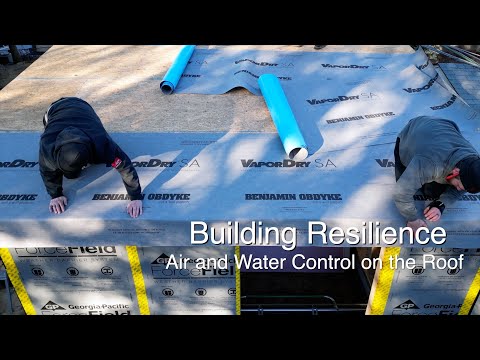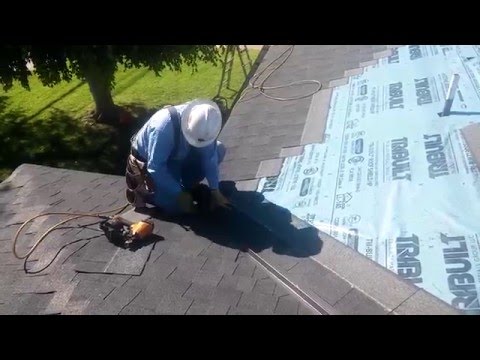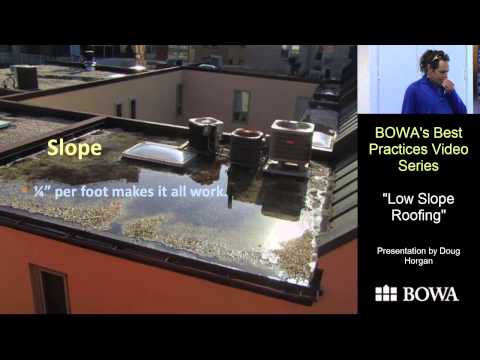The underlayment is the water-control layer; valleys, crickets, and chimneys are the most vulnerable spots
When installing a tile roof, it is important to understand that tile roofing is not waterproof. The underlayment layer under the roofing is the waterproofing layer. This is NOT like asphalt shingles. The tile protects the waterproofing from UV degradation and impact from falling objects, so the roof must be watertight before tile roofing goes down.
Three-ply system for tile roof:
- Nailable base sheet (SBS modified bitumen)
- Self-adhered mid-ply membrane (SBS Modified bitumen)
- Cap sheet (also self-adhered SBS modified bitumen)
In vulnerable areas, like valleys, chimneys, and crickets, Eric installs standard peel and stick membrane before getting to these three layers.
Beginning at the bottom, install peel and stick membrane in the valley directly onto roof deck. All valleys and crickets should overlap shingle-style. Some YouTube roofers install the valley metal atop the plywood or OSB, and then run peel and stick along the edges, but not only is that cutting corners on one of the most vulnerable places, it can leak.
With the valleys covered with peel and stick, and stuck to the roof deck, Eric installs the nailable base sheet in the cricket. It overlaps the valley membrane shingle-style so that water running downhill cannot work its way under a roofing layer. The nails he uses are 7/8 inch long with a 1-inch cap.
Over the base sheet goes the mid-ply peel and stick membrane. Eric puts nails along the top edge of this mid-ply layer because he says when you hot mop or torch down without nailing the top edge, the membrane wrinkles. If you nail it down along the top edge, you'll get more than 25 wrinkle-free years.
The roll roofing membrane goes atop the mid-ply layer. Again, it is a self-adhered membrane, and Eric uses a j-roller to make sure the adhesive adheres. The roll roofing is also nailed along its top edge
Chimneys also need an extra layer of protection
When flashing around the chimney (13:20), he lays down self-sticking membrane on the roof deck, cutting the top and bottom corners art a 45-degree angle and folding around the corner. Metal flashings are bedded in roofing cement or silicone. For a detailed visual explanation of how to flash a chimney, see this animation.
Editor's Note:
Toward the end of this video, Eric advises against covering the roof with peel and stick membrane because, he says, the heat it generates causes moisture problems on the inside of the house. I am doubtful that this is a heat issue as much as I think it is a permeance and drying issue.
Felt paper is just as dark as peel and stick membrane, so the heat buildup is similar. Felt paper can, however, absorb and release moisture, which peel and stick roofing membrane cannot.
This means that a roof covered with felt can allow attic moisture to exit, whereas a roof covered with an impermeable membrane will not allow moisture to escape. It may be even simpler than that, too. It may just be that leaky roofs (air leaks) can dry faster than tight ones. For more on Vapor Permeance and Permeability, see this podcast/article.
—Eric Garcia is a roofing contractor and YouTuber in the Los Angeles area











